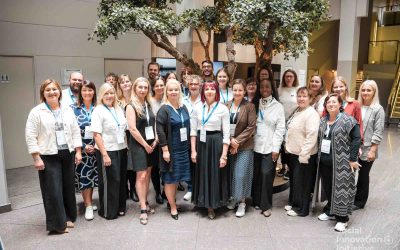How to favour active transport and tackle lower levels of physical activity in the community?
Within the SPAcE project, we have been reviewing the final Urban Active Environments (UActivE) Action Plans for promoting sustainable physical activity-friendly environments in cities and towns across Europe through the integration of active transport.
On 11th – 12th October we met with partners in Tukums (Latvia) for the final partnership meeting hosted by Tukums Municipality to update the whole partnership on the progress and main achievements in implementing the final Action Plan for promoting active transport infrastructure and programmes that promote the use of cycling and walking.
The Action Plans although with a common objective have focused on different areas of infrastructure, built and social environments and the population for enhancing, promoting and redesigning active travel programmes in urban environments.
Supporting the sharing of best practice in policy interventions, we also visited different public areas of Tukums that have been developed with new sports and exercise facilities for supporting physical activity among its residents.
As a result these Action Plans can be used as key examples of how co-production can support the transformation of cities for:
- developing bike and pedestrian paths,
- redesigning exercise facilities in public recreational areas,
- facilitating physical activity for school children and families through walking trails.
The meeting provided the opportunity for Expert partners to review the plans implementation and to assess overall their relevance and sustainability within current and future policy actions. The final Action Plans with specific goals and actions to address low levels of physical activity will be available for download from the SPAcE project website at the end of 2017.
The final stage of the project will include the completed review of the Action Plans priorities, dialogue for policy intervention and advocacy in assessing the economic value of the plans in reference to the Health Economic Assessment Tool (HEAT).
Furthermore, two main outputs of the project will be finalised:
- How to create an Urban Active Environment (UActivE) Action Plan – Lessons learnt and case studies from five European cities from the SPAcE EU project,
- Measuring the value of an Urban Active Environment, using the WHO Health Economic Assessment Tool (HEAT).
These documents will be available to download from the SPAcE website at the end of 2017.
We are now organising the final launch events in each country that will be online and face to face events to promote the final project results to a wide community of stakeholders and beneficiaries who will have potential to use and adopt the results for further working in the field of active transport development.
SPAcE – Supporting Policy and Action for Active Environments is funded by Erasmus+ Sport: Support to Collaborative Partnerships programme aims to integrate active transport programmes (i.e. walking to school, cycle to work schemes etc.) into public policy across the European Union. The overall aim of the SPAcE project is to make the healthy choice the easy choice through creating sustainable urban active environments in cities and towns across the European Union.
The project partnership brings together 10 organisations from 8 countries:
- University of Gloucestershire (United Kingdom, coordinator);
- University of Oxford (United Kingdom);
- University of Thessaly(Greece);
- University of Zurich (Switzerland);
- Fit for Life Program – LIKES Foundation for Sport and Health Science (Finland);
- Castilla La Mancha Regional Government of Education (Spain);
- Tukums Municipality(Latvia);
- Brasov Metropolitan Agency (Romania);
- Municipality of Trikala(Greece);
- CESIE (Italy).
For more information about SPAcE, please visit project or contact: rosina.ndukwe@cesie.org.









